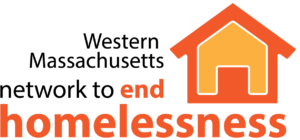Unaccompanied Homeless Youth Work Group
Meeting Minutes – June 12, 2012
In attendance: Marge Barrett-Mills, Tree House, Shannon Barry, Springfield Public Schools, Maurie Bergeron, Compass Project, Lorrie Bobe, Division of Youth Services, Katie Geoffroy, Chicopee Schools, Lisa Goldsmith, Dial/SELF, Maureen Lutza, Chicopee Schools, Kim Majewski, Gandara Center, Jill St. Martin, Father Bill’s and MainSpring, Jordana O’Connell, Holyoke Public Schools, Pamela Schwartz, network coordinator, Cindy Rodalakis, Chicopee Schools, Jean Rogers, Center for Human Development
Special Guest: Maurie Bergeron: The Compass Project (out of LUK Crisis Center) – LUK joined Worcester Task Force on Teen Housing a few years ago in order to better coordinate and respond to rise of teens in transition/homeless. Met over 1.5 years. Approached Health Foundation of Central Mass. for funding – told to obtain data – with assistance of Clark Univ., conducted PIT count for homeless youth, analyzed data (surveyed roughly 700, found roughly 200 homeless). Went back to foundation with proposal – LUK as lead agency. Funded 5 year grant (estimated $2.5 million over 5 years) – 2011, 1st year planning and research – spent year doing national review of programs, a lit review, provider interviews, focus groups. By Oct., developed a pilot. Funder is primarily interested in prevention models.
Targeted 3 prevention groups: (1) young people who are currently with their family but homeless and high level of conflict (8 referrals); (2) DCF young people who are 17 who are not signing on for extended services (research shows more likely to become homeless at 18 under these circumstances) (4 referrals) (3) homeless for 90 days or less (research shows that less time homeless, less likely to become chronically homeless) (2 youth at this point, couch surfing at this time, working with them towards permanent housing). Working with one high school in Worcester for referrals. Age range is 17-21 years old. Pilot program will serve 18 youth. Next year will enter full implementation phase.
Treatment includes: Wrap-around services, case management, family mediation, linkage to services – health care,
counseling, youth employment, vocational services. Flexible funds attached to each family, e.g., for bus passes, interview clothes, housing. Estimating time with each youth at about a year. Will vary depending on youth needs.
Unanticipated language and immigration barriers.
Next phase: develop and train job/education entry points in the city, so young people can access services currently in the city.
Also working on local and state policy work to support sustainability.
Special Guest: Jill St. Martin, Father Bill’s & MainSpring
Father Bill’s operates 2 emergency adult shelters (Quincy and Brockton), 2 family shelters, 56 scattered site family units, also 300 units of permanent, supportive housing (Shelter Plus Care, SHP, all though McKinney)
Jill started with Father Bill’s in 2003. Between 2004-07, saw increase in unaccompanied youth coming into shelter. Very few resources. Seeing youth who were not engaged in school, some with substance abuse issues, in need of treatment-based opportunities. Worked hard to get them out of shelter quickly (e.g., job corps, half-way house).
Worked closely with homeless liaison in Quincy as well. For kids still in school, kids would choose to sleep outside vs. shelter – fearful of shelter.
In 2007-08, did a focus group with homeless youth, working with homeless liaison at Quincy Public Schools. Focus group revealed that none of the kids wanted shelter, they wanted their own place (debunked instinct to create a youth shelter no matter how uniform the age). Tried to be creative with kids who were extremely vulnerable but resistant. Had a meeting with them at shelter, to break down fears, offered tours, recruited to volunteer to serve a meal, expose them to shelter being a safe place. But shelter wasn’t set up for kids (time for entering, exiting, meals, etc.).
Took a step back to examine what Father Bill’s could do: decided to create a youth protocol for ages 18-22. Different from typical shelter rules, e.g., – more flexibility around the schedule, around leaving belongings behind and retaining bed status. Click here for youth protocol.
Used HPRP funding to look at youth housing – housed 25 young adults in either own apt or 2 youth in apt. HPRP allowed them to give youth a bridge between completing high school to furthering education/vocational – Father Bill’s worked them over the year to help with transition. Since HPRP funds exhausted, inspired creation of youth protocol to accommodate them.
Over the last 3 years, steady rise in youth numbers (18-22 years old): FY11, served 63 unaccompanied youth in Quincy shelter; 69 in Brockton shelter. As of 5/1/12, 75 youth in Quincy, 77 in Brockton
2 case managers at each site – serve 150 at each site each day.
1 Housing specialist who works between 2 shelters, also youth specialist.
If youth not enrolled in school, will work with them to encourage re-enrollment or other options (GED, night programs, etc.).
The group extended special thanks to Maurie and Jill for taking their time (and travel!) to share their programs with us. The group agreed further discussion of integrating youth protocols in western mass shelters would be useful. Will do so at next meeting on: Tuesday, July 17, 9:30-11:00 am, Northampton Senior Center, 67 Conz Street.

